Re-Tiling Polygonal Surfaces
- "Re-Tiling Polygonal Surfaces"
- Greg Turk
- Computer Graphics, Vol. 26, No. 2 (July 1992)
- (SIGGRAPH 92 Conference Proceedings)
- pp. 55-64
PostScript version of paper (6.4 Mbytes)
PDF version of paper (4.1 Mbtyes)
Abstract
This paper presents an automatic method of creating surface models
at several levels of detail from an original polygonal description
of a given object. Representing models at various levels of detail
is important for achieving high frame rates in interactive graphics
applications and also for speeding-up the off-line rendering of complex
scenes. Unfortunately, generating these levels of detail is a
time-consuming task usually left to a human modeler. This paper
shows how a new set of vertices can be distributed over the surface
of a model and connected to one another to create a re-tiling of a
surface that is faithful to both the geometry and the topology of the
original surface. The main contributions of this paper are: 1) a
robust method of connecting together new vertices over a surface, 2)
a way of using an estimate of surface curvature to distribute more
new vertices at regions of higher curvature and 3) a method of smoothly
interpolating between models that represent the same object at
different levels of detail. The key notion in the re-tiling procedure
is the creation of an intermediate model called the mutual tesselation
of a surface that contains both the vertices from the original model
and the new points that are to become vertices of the re-tiled surface.
The new model is then created by removing each original vertex and locally
re-triangulating the surface in a way that matches the local
connectedness of the initial surface. This technique for surface
re-tesselation has been successfully applied to iso-surface models
derived from volume data, Connolly surface molecular models and
a tessellation of a minimal surface of interest to mathematicians.
Below are the color figures from this paper:
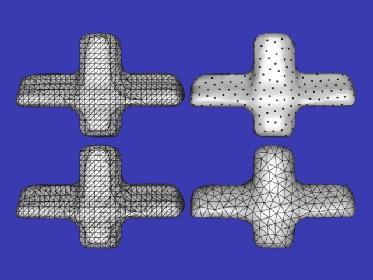
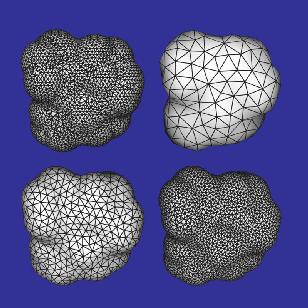
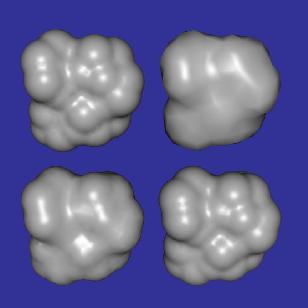

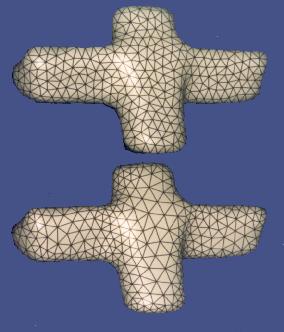
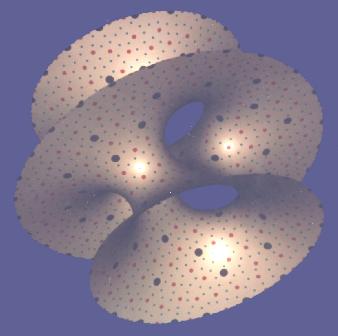

Go to
Greg Turk's Home Page.
